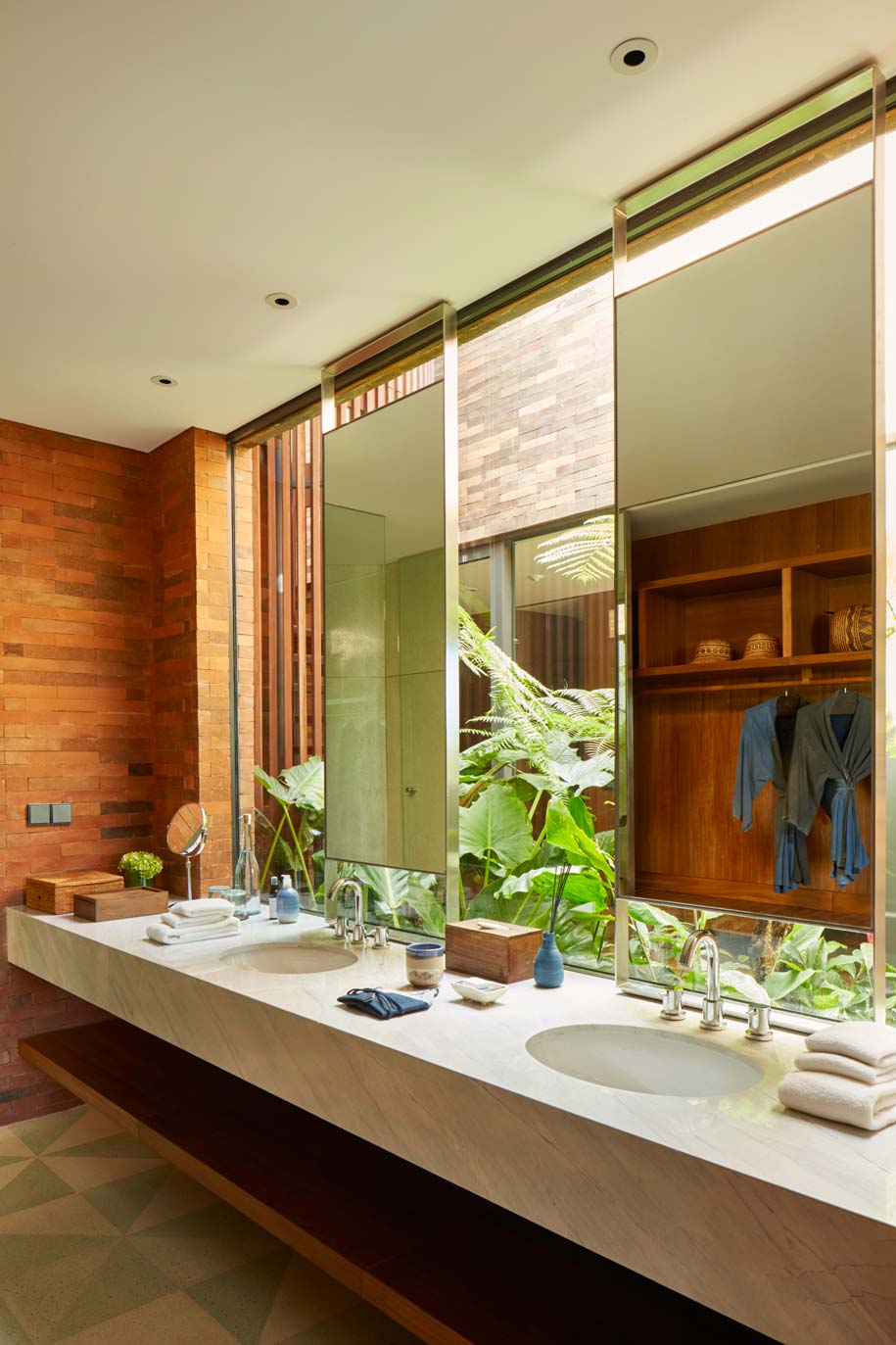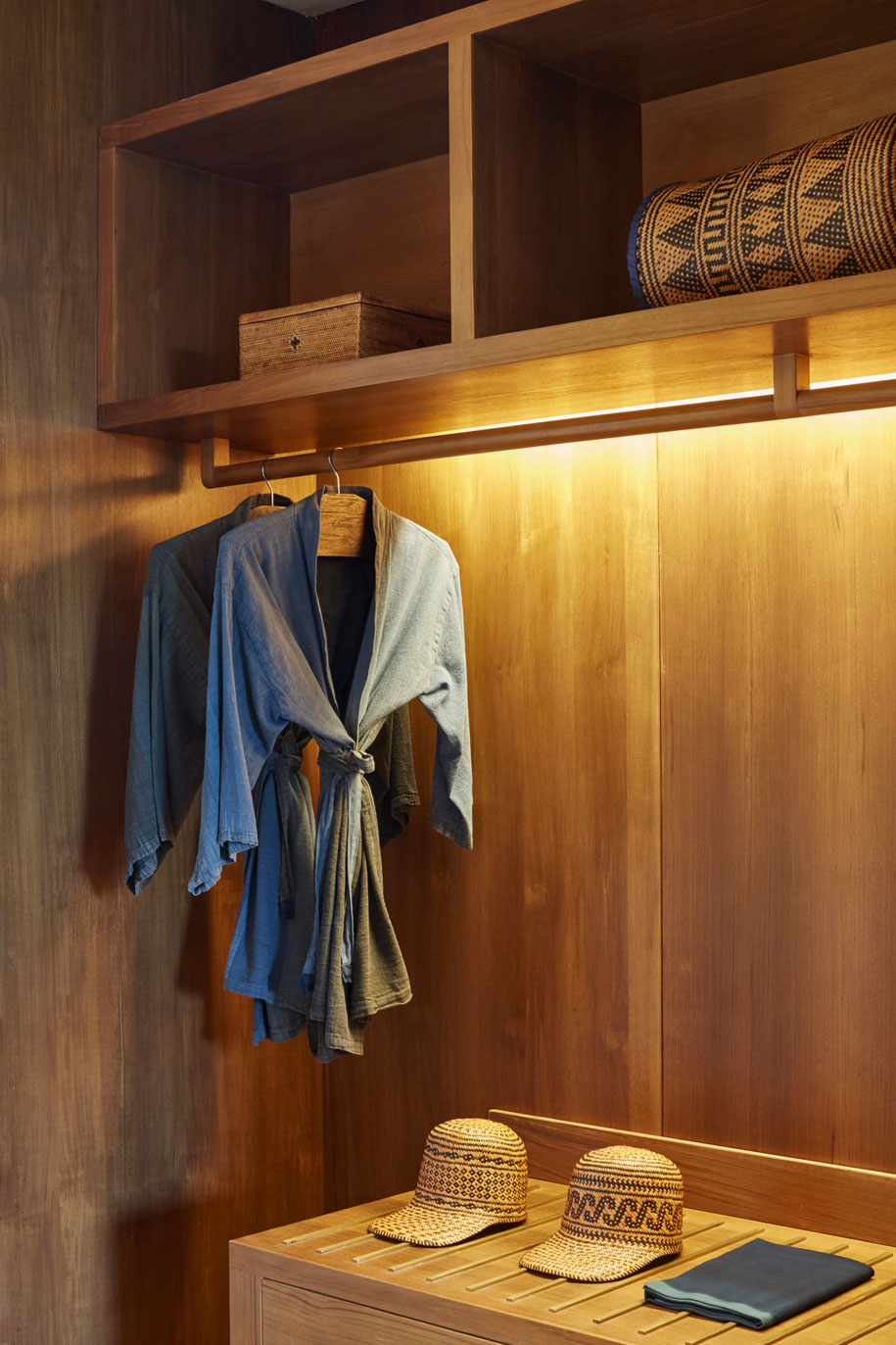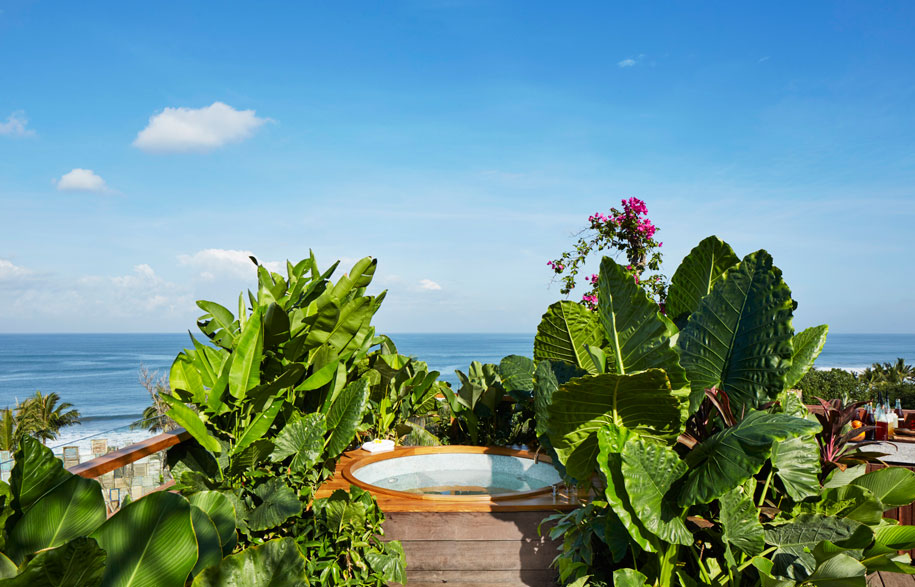Located in Seminyak, Bali, the Katamama hotel sits on the Jalan Petitenget beach belt – a stone’s throw away from Potato Head Beach Club, the island’s cultural institute, also owned and managed by the PTT Family. Contrasting the lively atmosphere of the beach club, the boutique hotel offers a quiet and private retreat for guests to wind down. The space is imbued with a sense of familiarity and warmth, and designed with the ambience of a home in mind, rather than a hotel. There is no lobby at Katamama; guests check in within the comfort of their suites where timeless design prevail over unnecessary ornamentation.
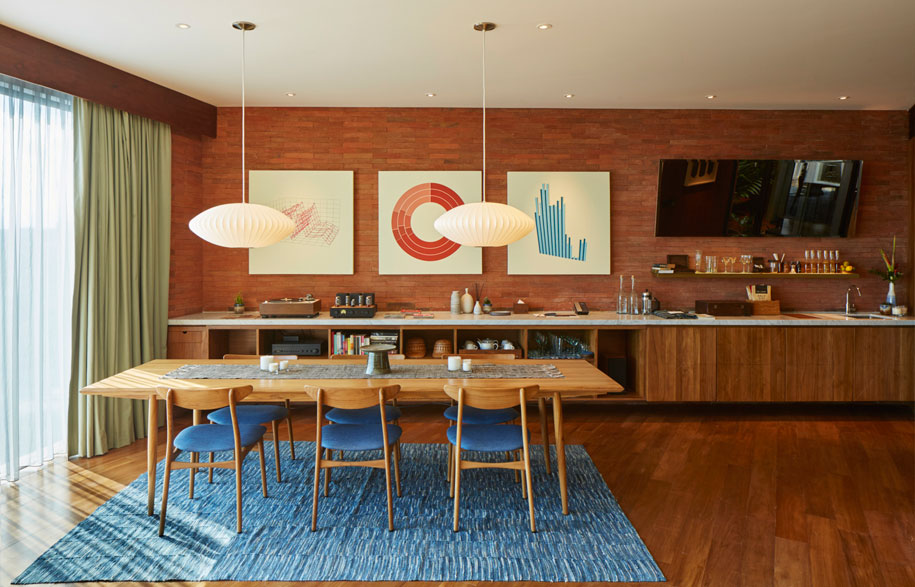
Singapore-based design studio Takenouchi Webb designed the Katamama interiors in collaboration with the PTT Family Creative Team. According to Marc Webb, co-founder of Takenouchi Webb, the team drew inspiration from Katamama’s architecture, designed by Indonesian architect Andra Matin. The building is composed of 1.5 million handmade Balinese bricks – the same material used to construct Balinese temples.
“The dominant handmade, local brick material of the building was a strong influence in determining the mood and palette of the interior design,” says Webb, who sought to unite the hotel’s exteriors and interiors as a seamless entity.

Implemented on selected walls in the rooms, the raw bricks were tastefully merged with a palette of teak flooring, solid timber slats and rough pale-coloured plaster. The bathrooms with their terrazzo floors and walls stand in playful contrast to the main spaces. The diverse material palette contribute to the creation of an informal setting, allowing travellers to feel at home.
“There was a strong direction from [the clients] to source [for] local materials and accessories,” shares Webb. The suites display a wealth of Indonesian materials and craftsmanship. A series of bespoke furniture, amenities and decorative elements were handcrafted by Indonesian craftsmen through traditional practises – exhibiting the rich heritage of the archipelagic state in a contemporary context.

Working with a Surabaya-based carpenter, Diraja Surya, the PTT family customised teak furniture featuring smooth curves and pencil legs, interpreting a marriage between Indonesian and European mid-century design. Cementing the homely aesthetic, the suites were also furnished using the owner’s personal collection of vintage furniture by the likes of Hans J. Wegner, Arne Jacobsen and Josef Hoffman, to name a few, and art supplied by Ark Galerie, offering a glimpse into Indonesia’s art scene.

“People now want an authentic and personal experience when they come to this beautiful and culturally-rich island,” says Ronald Akili, the co-founder of the PTT Family. Guided by a ‘handcraft hospitality’ concept, the rugs, bed throws and bathrobes were naturally dyed and hand-weaved by Tarum, a textile workshop based in Gianyar. Room amenities were traditionally dyed and stamped by Tjok Agung Indigo, a husband-and-wife team based in the outskirts of Bali. Guests may also marvel at the pottery pieces by ceramists Gaya and Jenggala – based in Ubud and Jimbaran respectively. Various storage containers featured in the rooms were made using woven orchid vines from the East of Bali.
A total of seven types of suites make up the 58 rooms in Katamama. The smallest suite spans 82 square metres, while the recently launched Katamama Suite, the largest single unit spans 320 square metres, featuring two bedrooms, a separate living, dining space, floor-to-ceiling windows and a terrace framing sweeping views of the Indian Ocean.
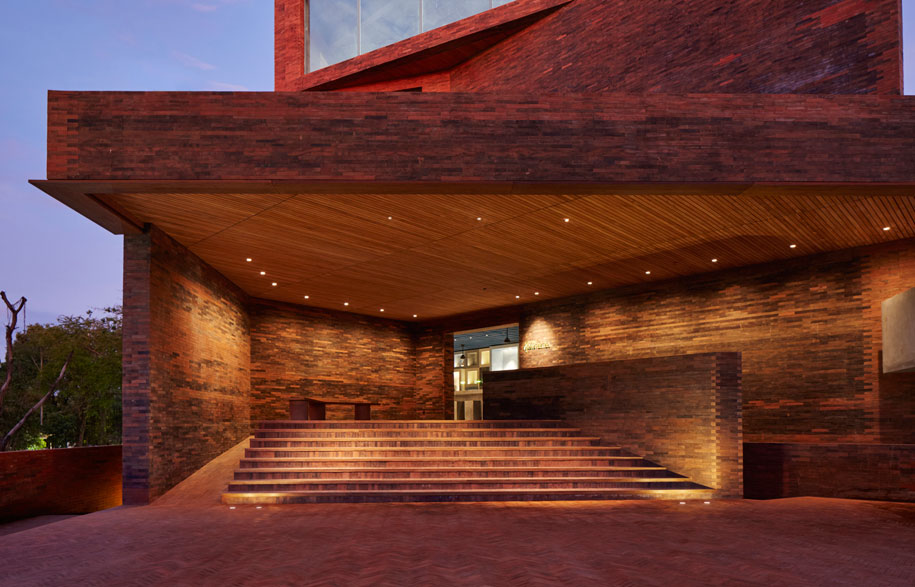
The overall design expression was also extended to public premises within the hotel, including the cocktail bar Akademi and Spanish restaurant MoVida.
“Our innovative cultural programming lets guests go past the regular tourist activities and really learn and explore Indonesia’s artistic, traditional and cultural practices,” explains Akili. Striving to create unforgettable experiences through its establishments, the PTT Family believes in collaborating with multiple creators from across various fields, be it art, music or design to create its own signature.

The group is currently developing its second and third hotels, Kataoma and Katamama Canggu, working with Rem Koolhaas and his firm, OMA and Brazilian architect Marcio Kogan and his firm, Studio M27, respectively. Each property will bear a unique personality, united by a drive to push the boundaries of modern hospitality.
Takenouchi Webb
takenouchiwebb.com
PTT Family
pttfamily.com
Photography: Martin Westlake (courtesy of PTT Family)

